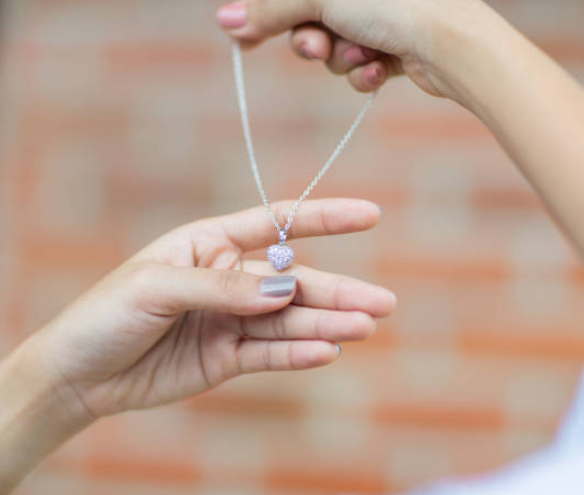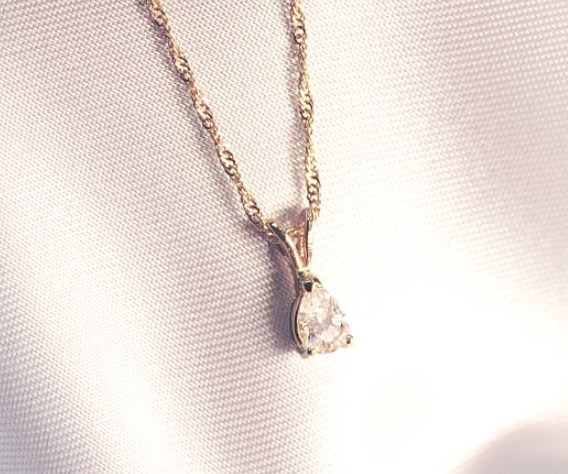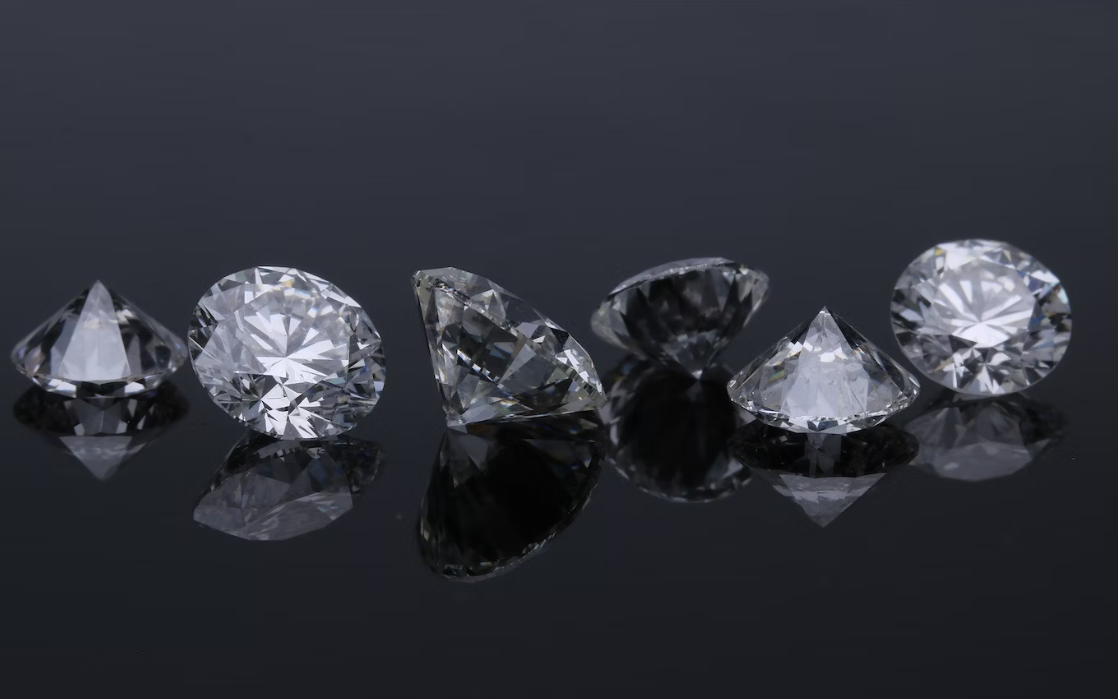One of the rarest discoveries in jewelry is a flawless diamond! You can spend half your life going on a shopping spree trying to find a product without any defects.
However, this does not mean that they do not exist. At one end of the diamond clarity scale, you may find a flawless diamond, while at the other end, you may find a diamond that contains too many inclusions that affect its clarity.

There are some diamonds in the middle of the scales, inclusions that are invisible to the naked eye but clearly visible under 10x magnification. These types of diamonds are the most common, and you’ll always find them in different jewelry types, including rings, necklaces, and earrings.
That said, a diamond’s clarity is an important factor to consider when looking for a quality diamond. In this article, we will explain what inclusions are in diamonds and elaborate on the various types of inclusions that exist.
What Do Inclusions in a Diamond Look Like?
Diamond inclusions are small imperfections that appear inside a gemstone. They are described as flaws by the Gemological Institute of America, and it is very rare to grade any diamond as internally flawless. Generally, diamonds are formed under enormous pressure and heat in the Earth’s core. As a result, the surface of the diamond leaves blemishes. Sometimes they look like tiny crystals, dots, or lines embedded within a diamond.
Some inclusions are barely visible, while others can completely affect a diamond’s clarity. Imperfections can affect a diamond’s brilliance because they block the light that passes through the diamond. To make matters worse, some inclusions make the diamond prone to breakage and breakage.
The few perfect diamonds that exist are worth a lot, while diamonds with too many inclusions are sold at a discarded price. Average-priced diamonds have varying numbers of external and internal defects. Most jewelers will ask you to ignore any diamond inclusions. But only if they don’t compromise the gemstone’s luster and strength.
Inclusions are identified during the grading process and given a grade between 0 and 10. Grade 10 is the lowest quality diamond with the most inclusions. Zero, on the other hand, is an almost flawless and excellent quality diamond. The grading system starts with the cut, followed by the color. It then ranks diamonds based on color and carat weight.
What Are Crystal Inclusions in Diamonds?
Crystal inclusions look like smaller diamonds in diamonds. These tiny crystals sometimes add personality and life to diamonds.
Some diamonds contain garnet, and if your birthstone is garnet, then this is a good choice for you. Most crystal inclusions cannot be seen with the naked eye and require at least 10x magnification to clearly identify them.
However, large or group crystals within a diamond tend to fuse. When this happens, they can ruin the diamond’s visual appearance.
As a result, they lower a diamond’s clarity grade and reduce its value.
What Are Jagged Natural Inclusions in Diamonds?
Jagged natural inclusions are a defect that dips beneath the polished surface of the diamond.

To further describe this, jagged inclusions are the portion of the rough diamond that is not touched during polishing.
You will find this type of flaw on the belt. If you take the time to evaluate diamonds with jagged natural inclusions, you may start to think that your diamond has broken.
Overall, if the carat weight of the diamond must be maintained, the diamond cutter must retain the inclusions in the diamond.
What Are Feather Inclusions in Diamonds?
The visual appearance of this inclusion resembles a feather. Feathery inclusions are tiny cracks inside a diamond. They are usually white in color. Sometimes, they contribute to the beauty of diamonds, especially when they are small.
However, when they appear from the top to the bottom of the diamond, its durability suffers. In terms of clarity, if they are small, your diamond should sparkle and enhance the beauty of the diamond, but if the feathery inclusions are located at the waist, your diamond may be too dull to be used in a ring setting.
What Are Natural Inclusions in Diamonds?
For gemstones and humans, natural defects make everything unique. Sometimes, blemishes are found on gemstones because they contribute to their aesthetics.
Natural inclusions are probably one of the best inclusions on a diamond. It is the part of the rough diamond that remains after the diamond is cut.
You’ll find natural inclusions around the four corners of the diamond’s waistline. This type of inclusions is considered a guide for cutters.
Sometimes, some diamond cutters tend to deliberately leave behind natural inclusions to prove that they didn’t remove too many diamonds during the cutting process.
What Are Knot Inclusions in Diamonds?
Nodule inclusions are described as crystal inclusions that have reached the polished surface of the diamond.
With proper lighting and powerful magnification, you can easily see where the knot and the diamond surface meet.
Unfortunately, this is one of the worst types of inclusions on diamonds.
Mainly because it is close to the outside of the gemstone, it can be seen directly with the naked eye.
It gives the impression that part of the diamond is raised on one facet, which is not visually appealing. In addition, they can also affect the durability of the gemstone.
Even the slightest drop can break a diamond. Therefore, if you encounter this type of inclusion, try to avoid diamonds.
What Are Cloudy Inclusions in Diamonds?
When you look at a diamond with cloud-like inclusions, you see something that looks like a cloud.

Cloudy inclusions are described as crystal clusters or needle-like inclusions.
When needles and crystals are too close to each other, they clump together to form a circular structure. Most of the time, they are not so noticeable when they are smaller in size.
However, if they were a little larger, they would have a white and hazy appearance. This, in turn, affects the diamond’s overall light performance.
When viewing a diamond grading report, when you see a circle with needle dots or a circle of small red dots, you automatically know that your diamond has cloud-like inclusions.
What Are Needle-Like Inclusions in Diamonds?
Needle inclusions are the most common type. They tend to appear in diamonds as small white dots that resemble light spots.
Some precise points may be black or gray. They can occur alone or in clusters. In general, they are difficult to find, so you can’t see them with the naked eye. They are only clearly visible at magnification of 20x or higher. However, when three or more needle points are present in an area, they form cloud inclusions. When this happens, cloudy areas can affect the diamond’s clarity grade.
That said, when shopping for a ring, you may want to avoid certain inclusions altogether so as not to regret your decision. The first is black carbon dots or crystals.
The black dot completely blocks light from passing through the diamond, making it dull and lifeless. In addition, long cracks or crack inclusions can affect the aesthetics of a diamond.
I don’t think you would want to walk around with a diamond that looks like it’s about to break. If a diamond with long cracks is slammed on a hard surface, it will crack.
Finally, you should avoid buying diamonds that contain a lot of cloudy inclusions. They tend to have a blurry effect, eliminating any chance of brightness.
Conclusion
The beauty of a diamond lies in its fire and brilliance. If not, you’d rather choose jewelry with different gemstones. Generally, you can only identify inclusions when a diamond is bare. When it is mounted, grading can be a challenge because the trim or prongs can hide inclusions. If you have any gemstones that contain inclusions, this is a good thing because you don’t have to worry too much about imperfections while wearing them.
